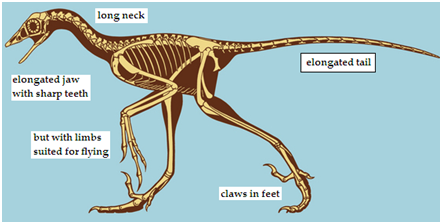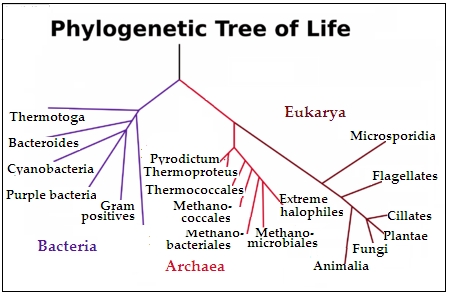The path that leads to the complex cells found in most plants and animals has got one step clearer, says S.Ananthanarayanan.
Tracing missing links is fascinating. In the path of evolution from reptiles to birds, for instance, the discovery of the Archaeopteryx, a creature with <reptile-like as well as bird-like features, was considered the finding of a ‘missing link’. But not all chains of evolution are completely known, even in the path of evolution of man from the apes, there are some stages which have not been proved by fossil or skeletal remains.

Anja Spang, Jimmy H. Saw, Steffen L. Jørgensen, Katarzyna Zaremba-Niedzwiedzka1, Joran Martijn, Anders E. Lind, Roel van Eijk, Christa Schleper, Lionel Guy and Thijs J. G. Ettema from the Universities of Upsala, Sweden, University of Bergen, Norway and University of Vienna, Austria report in the journal, Nature that they have identified a key step that has so far been missing in the understanding of how the complex cells, or cells with internal structure, like a differentiated nucleus, found in the amoeba to man, came to be.
Types of Cells
There are two main kinds of cells – the simplest, which consist of just the DNA, proteins and other substances enclosed within a single membrane, with no compartments. These are the prokaryotes, the cells that have no nucleus. The other, more complex kind are the eukaryotes, or the cells that do have separate, membrane bound compartments, particularly the nucleus, which contains a more complex DNA, within the main, outer membrane.
Examples of the first kind of cell are the bacteria and another group, called the archaea, methane producing organisms which are so named as they were first found only in inhospitable surrounding as may have existed in the ancient earth. Both kinds of cells take in nutrients, excrete waste matter, carry out photosynthesis or promote chemical action, and replicate. And these cells generally exist only as single cells. At first, bacteria and archaea were considered to be the same type of cell but were later recognized as fundamentally different, based on the way genetic information is expressed in the two kinds of organisms.
Examples of the more complex kind of cells are the cells of all animals, plants and fungi. These cells are larger and their defining characteristic is that the DNA is enclosed within a distinct protein membrane, the nucleus. Because of the existence of the nucleus, this class of cells is called ‘eukaryotes’, or ‘with a true kernel’, while the simpler kind are called ‘prokaryotes’, or ‘before the kernel’. While there can be single celled eukaryotes, all multi-cellular life forms are made up of this kind of cells.
The complex kind of cells have a different way of replication and the organization of expression of the DNA, in the production of different proteins, is also different. It has been seen that bacteria and archaea were the first to appear, as long as 3.8 billion years ago, while the eukaryotes arose later, from 2.7 to 1.6 billion years ago. The nature of the complex eukaryotes is such that functions of simpler bacteria or archaea are contained in compartments within the cell, as if eukaryotes had engulfed, or internalized the simpler cells. To discover the pathway by which eukaryotes evolved from the simpler predecessors, and hence set in motion the evolution of modern life forms, is hence the object of much research.
Origin of complexity
One theory of how eukaryotes arose holds that a large prokaryote cell needed to create depressions in its surface to have more surface area, to service its large volume. These depressions ultimately specialized in function and formed separate compartments within the cell. Another theory is that the first eukaryote arose out of a merger of two prokaryotes, one a bacterium and the other an archaeon. This theory has been developed to suggest that one organ compartment in the modern cell, the mitochondrion, which distributes energy for cell processes, and is present in eukaryots, arose from a bacterium. And mechanisms have been suggested of how the bacterium components and the archaeon parts were complementary in providing the correct environment of acidity, of the ability to move, or of neutralizing oxygen, which was toxic to early cellular forms.
But the evidence before researchers is that while there are organelles, like the mitochondria, whose origin can be traced back to bacteria, the machinery for processing genetic information of eukaryotes is akin to that of archaea. And the evolutionary line through which eukaryotes emerged, remains unclear. The line may have descended from a common ancestor, following the classic ‘three domains of life- tree’. Or eukaryotes may have emerged from within the archaea domain. But there is now accumulating evidence for this second scheme, that eukaryotes emerged as a sister to or from an ancestor of archaea, in the form of several signature proteins of eukaryotes being found in an archaean ancestral group called TACK, an acronym for Thaumarchaeota, Aigarchaeota, Crenarchaeota and Korarchaeota. But the picture is still unclear as eukaryotes seem to appear on the scene with all complexity there in place, with no instances of an intermediate organism that demonstrates the archaea-eukaryote transition.

Missing link
It is in this context that the announcement by Etemma and others in Nature is significant. Following the lead that there could be evidence of lineage in the genome of lines derived from TACK, the authors of the paper worked out the base genome of samples of marine sediments which contained members of the Deep Sea Archaeal Group, an untested evolutionary line that was related to TACK archaea. The researchers used sophisticated tools of investigation and analysis and succeeded in putting together one complete genome and two partial genomes of closely related members of the Deep Sea Archaeal Group. With the help of parts of the genome, known as marker genes, which remain over long spells of evolutionary change, the researchers have been able to reconstruct a path of evolution which connects this new archaeal group with eukaryotes, thus establishing the new group as the nearest relatives of eukarya. And the group has been called called Lokiarchaeota, on account of the sediments having been extracted at Loki’s Castle, a field of hydrothermal vents in the mid-Atlantic, a kind of place where archaea would thrive.
As there was possible common ancestry of Lokiarchaeota, and eukaryotes, the genome of Lokiarchaeota was studied, with estimates of what proteins the genome may code for. The results were eye opening. For one, 32% of the proteins coded for are unique, with no known precedents. About the same number, 26%to 29%, show affinity to archaeal and bacterial proteins, respectively, which shows that there has been gene exchange between archaea and bacteria. But most notably, a significant number, 175, and 3%, of the proteins that the genome could lead to were similar to eukaryote proteins. And these proteins are mainly those involved in membrane deformation and cell shape formation.
The group Lokiarchaeota thus represents the emergence of characteristic eukaryote proteins in an archaeal line, even before the bacterial features of mitochondria had appeared. But what was present represents a “rich genomic ‘starter-kit’ to support the increase in the cellular and genomic complexity that is characteristic of eukaryotes”, the paper says.
------------------------------------------------------------------------------------------